Abstract
We present here a study of the relationship in time between the elevation of total serum IgE, the parasite-specific IgE response, and the potentiated IgE response to unrelated antigen which occurs in rats following infection with the worm parasite N. brasiliensis. During a first infection the potentiated IgE response (to egg albumin) and elevation of total IgE occur synchronously rising to a peak on days 12-14 after infection, with the fastest rate of increase occurring between days 8 and 10. N. brasiliensis-specific IgE rises to a peak some 2-3 weeks later when both total IgE and the potentiated response have largely declined. A strain difference is shown in that Wistar rats produce far lower levels of total and parasite-specific IgE than Hooded Listers. Events following reinfection differ in that total IgE rises more rapidly, very high levels being reached 6 days after reinfected together with a secondary specific IgE response to N. brasiliensis. The total IgE level, however, rises by a far greater factor than parasite-specific IgE and declines rapidly while the parasite-specific response declines slowly over many weeks. The egg albumin response is not repotentiated. It is proposed that the total IgE response and the potentiated IgE response which forms a small component of it results from the release of a non-specific IgE-stimulating factor produced by N. brasiliensis-specific T cells. In this scheme the same or similar cells are involved in the production of N. brasiliensis-specific IgE through a separate specific helper function.
Full text
PDF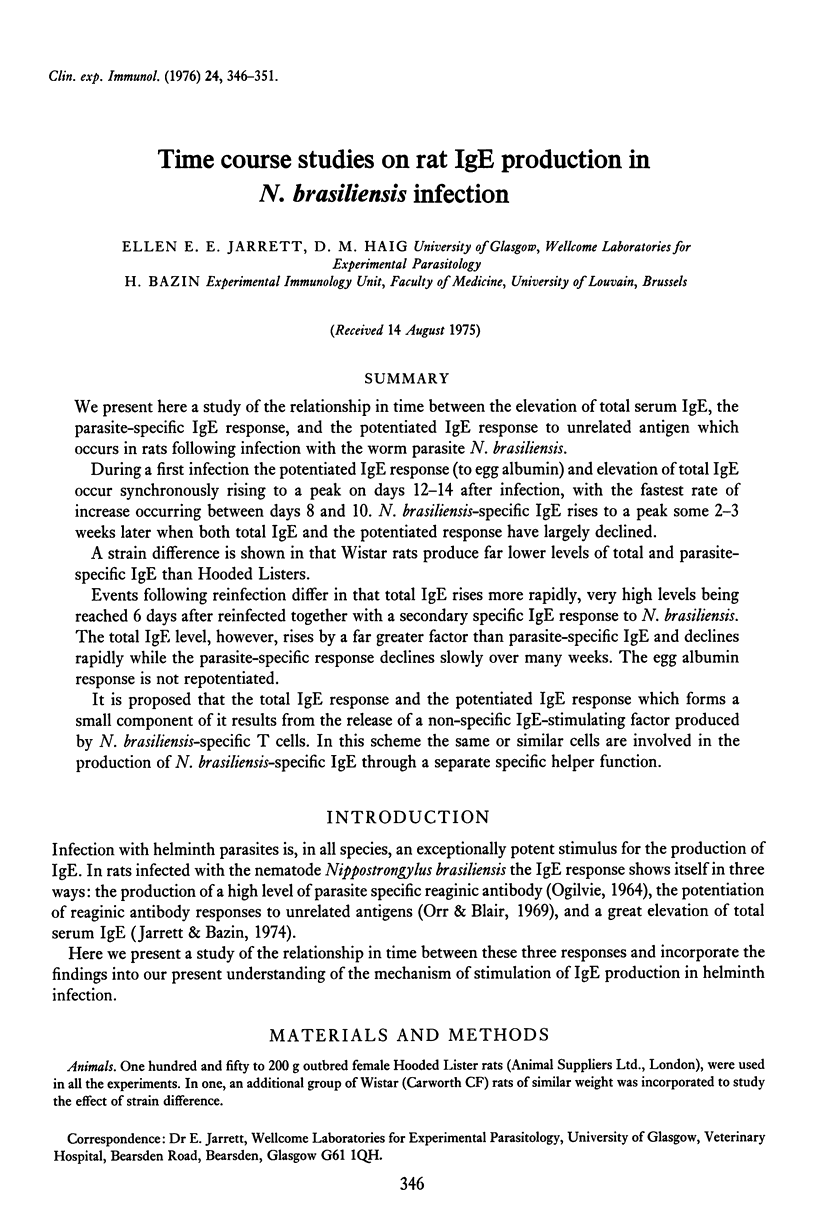
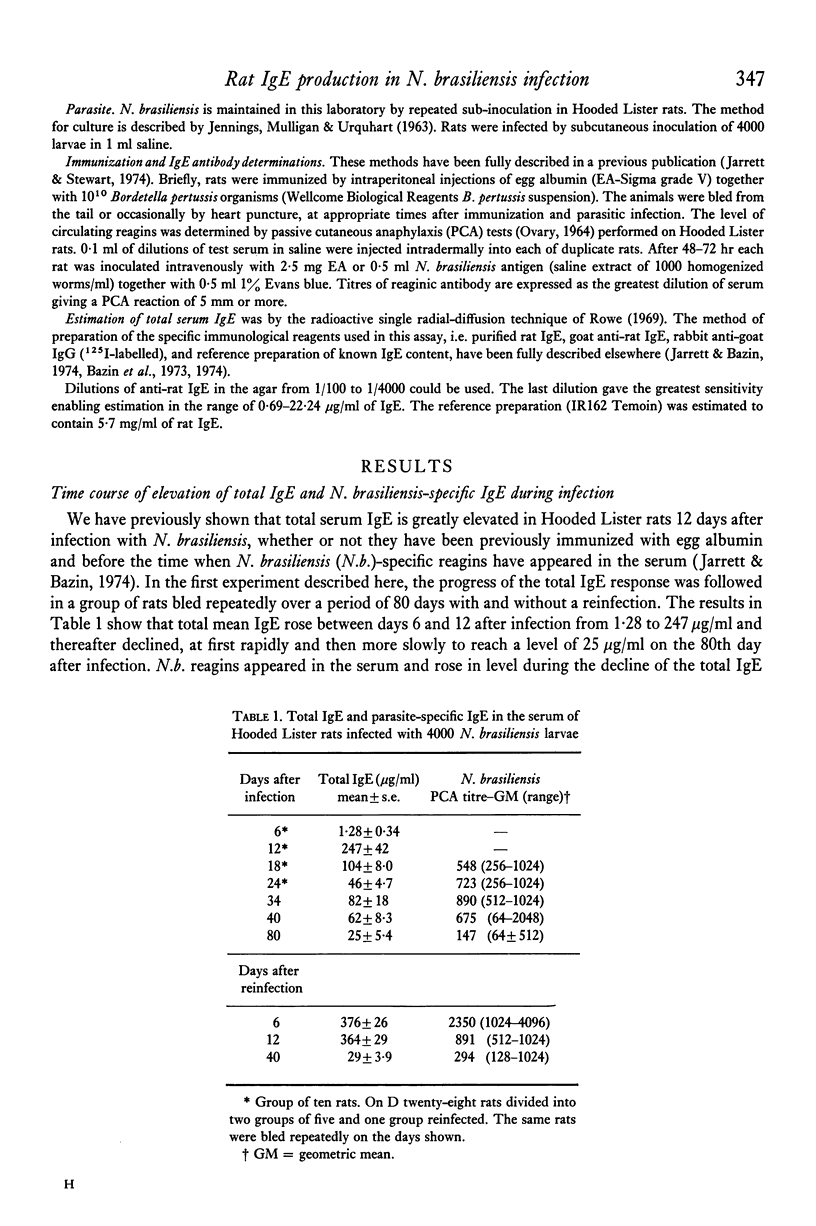
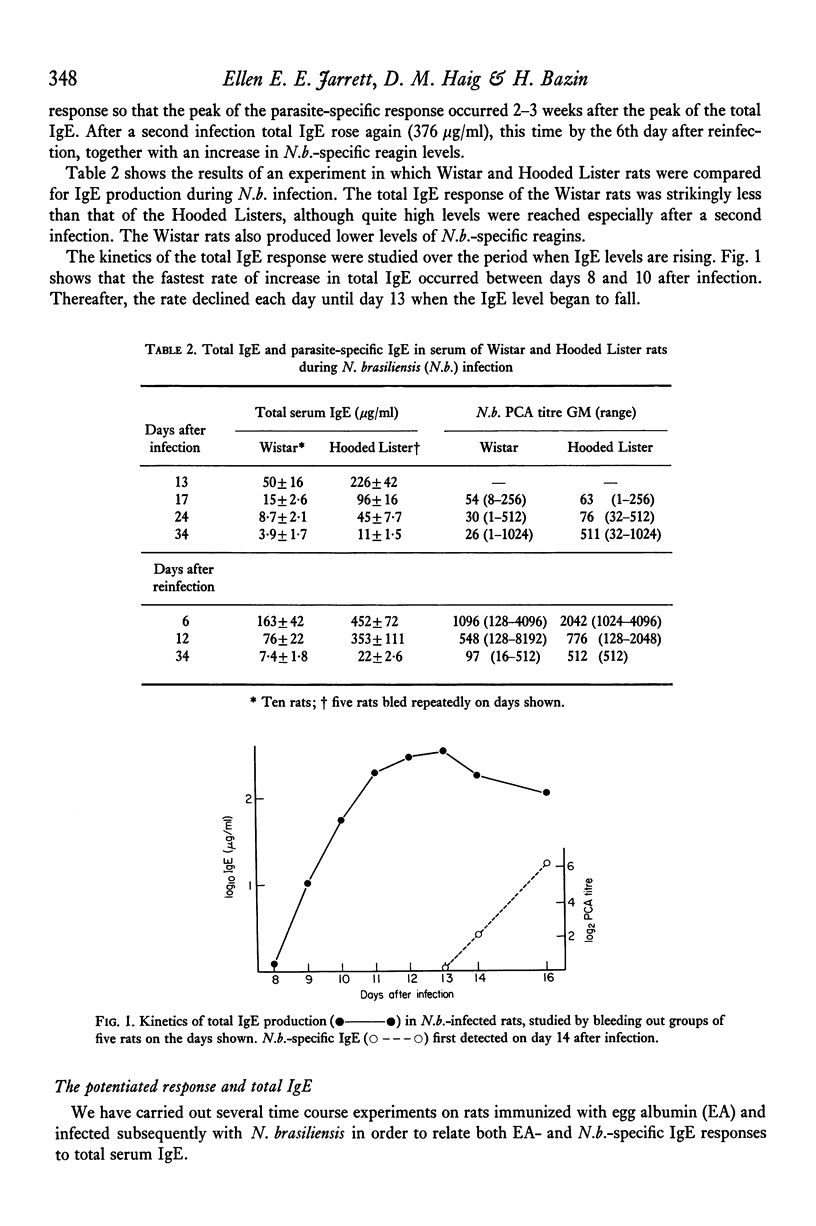

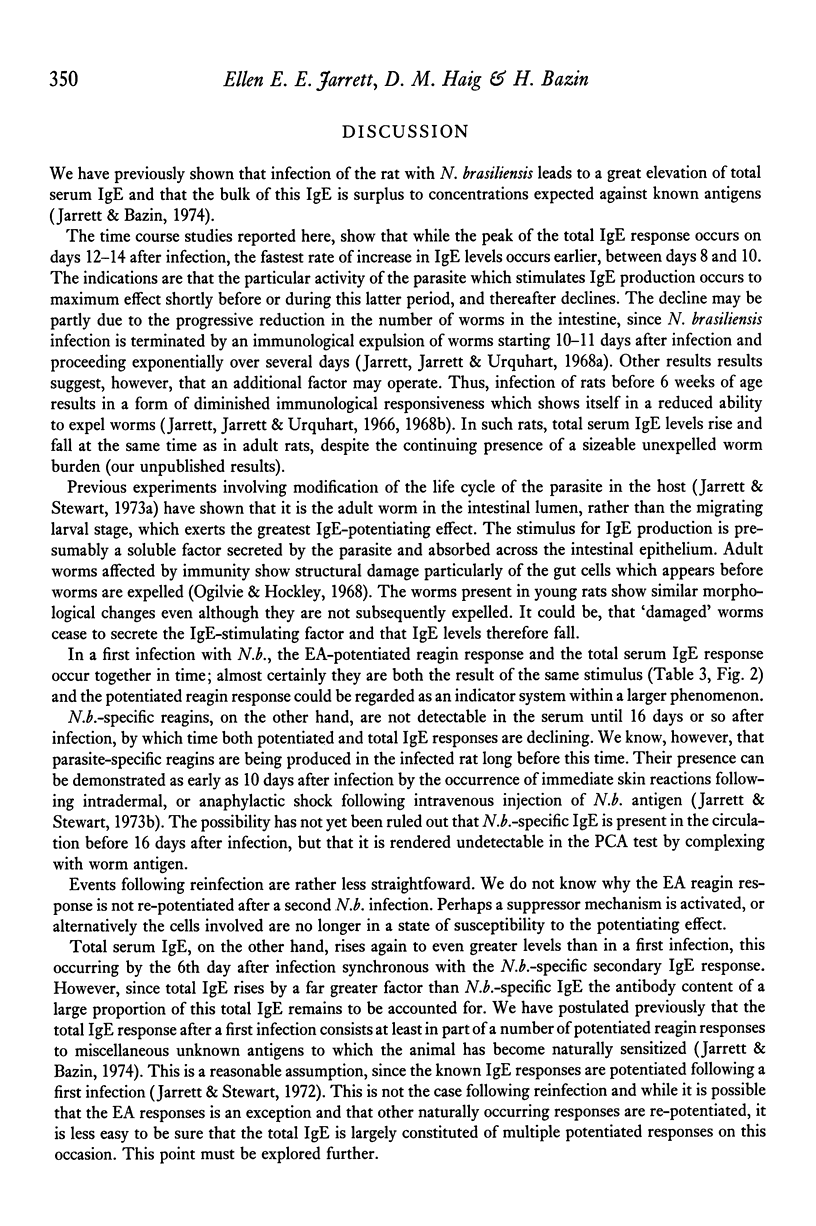
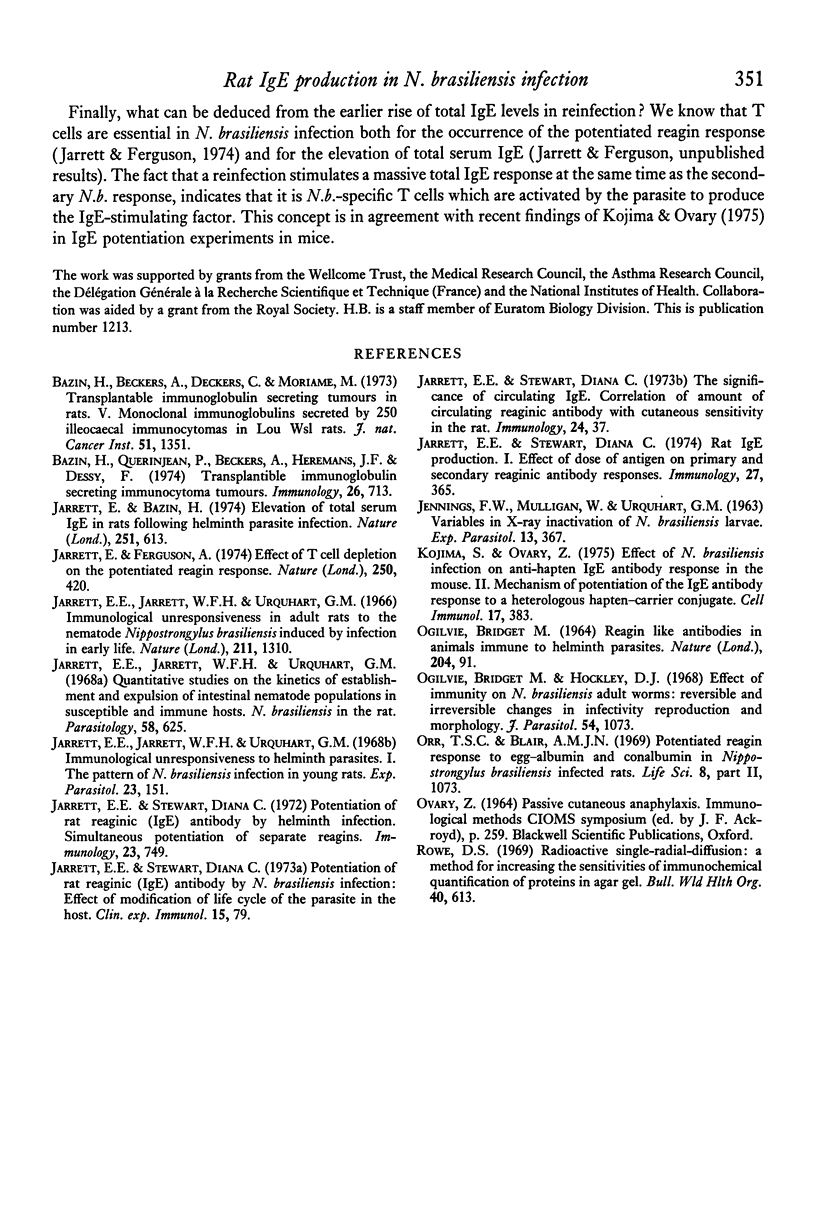
Selected References
These references are in PubMed. This may not be the complete list of references from this article.
- Bazin H., Querinjean P., Beckers A., Heremans J. F., Dessy F. Transplantable immunoglobulin-secreting tumours in rats. IV. Sixty-three IgE-secreting immunocytoma tumours. Immunology. 1974 Apr;26(4):713–723. [PMC free article] [PubMed] [Google Scholar]
- Jarrett E. E., Jarrett W. F., Urquhart G. M. Immunological unresponsiveness in adult rats to the nematode Nippostrongylus brasiliensis induced by infection in early life. Nature. 1966 Sep 17;211(5055):1310–1311. doi: 10.1038/2111310a0. [DOI] [PubMed] [Google Scholar]
- Jarrett E. E., Jarrett W. F., Urquhart G. M. Immunological unresponsiveness to helminth parasites. I. The pattern of Nippostrongylus brasiliensis infection in young rats. Exp Parasitol. 1968 Oct;23(2):151–160. doi: 10.1016/0014-4894(68)90053-2. [DOI] [PubMed] [Google Scholar]
- Jarrett E. E., Jarrett W. F., Urquhart G. M. Quantitative studies on the kinetics of establishment and expulsion of intestinal nematode populations in susceptible and immune hosts. Nippostrongylus brasiliensis in the rat. Parasitology. 1968 Aug;58(3):625–639. doi: 10.1017/s0031182000028924. [DOI] [PubMed] [Google Scholar]
- Jarrett E. E., Stewart D. C. Potentiation of rat reaginic (IgE) antibody by helminth infection. Simultaneous potentiation of separate reagins. Immunology. 1972 Nov;23(5):749–755. [PMC free article] [PubMed] [Google Scholar]
- Jarrett E. E., Stewart D. C. Rat IgE production. I. Effect of dose of antigen on primary and secondary reaginic antibody responses. Immunology. 1974 Sep;27(3):365–381. [PMC free article] [PubMed] [Google Scholar]
- Jarrett E., Bazin H. Elevation of total serum IgE in rats following helminth parasite infection. Nature. 1974 Oct 18;251(5476):613–614. doi: 10.1038/251613a0. [DOI] [PubMed] [Google Scholar]
- Jarrett E., Ferguson A. Effect of T cell depletion on the potentiated reagin response. Nature. 1974 Aug 2;250(465):420–422. doi: 10.1038/250420a0. [DOI] [PubMed] [Google Scholar]
- Kojima S., Ovary Z. Effect of Nippostrongylus brasiliensis infection on anti-hapten IgE antibody response in the mouse. II. Mechanism of potentiation of the IgE antibody response to a heterologous hapten-carrier conjugate. Cell Immunol. 1975 Jun;17(2):383–391. doi: 10.1016/s0008-8749(75)80042-6. [DOI] [PubMed] [Google Scholar]
- Ogilvie B. M., Hockley D. J. Effects of immunity of Nippostrongylus brasiliensis adult worms: reversible and irreversible changes in infectivity, reproduction, and morphology. J Parasitol. 1968 Dec;54(6):1073–1084. [PubMed] [Google Scholar]
- Orr T. S., Blair A. M. Potentiated reagin response to egg albumin and conalbumin in Nippostrongylus brasiliensis infected rats. Life Sci. 1969 Oct 15;8(20):1073–1077. doi: 10.1016/0024-3205(69)90459-7. [DOI] [PubMed] [Google Scholar]
- Rowe D. S. Radioactive single radial diffusion: a method for increasing the sensitivity of immunochemical quantification of proteins in agar gel. Bull World Health Organ. 1969 Apr;40(4):613–616. [PMC free article] [PubMed] [Google Scholar]


